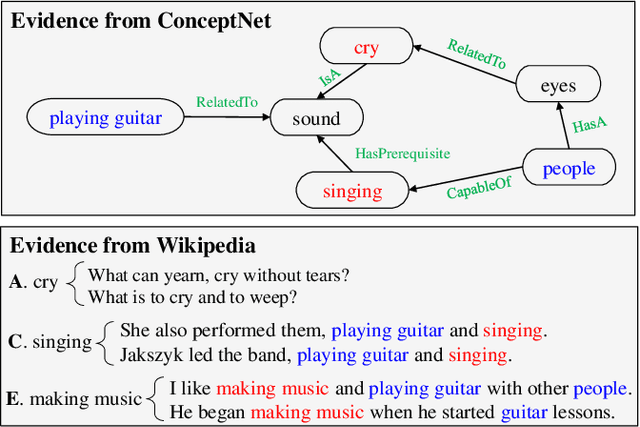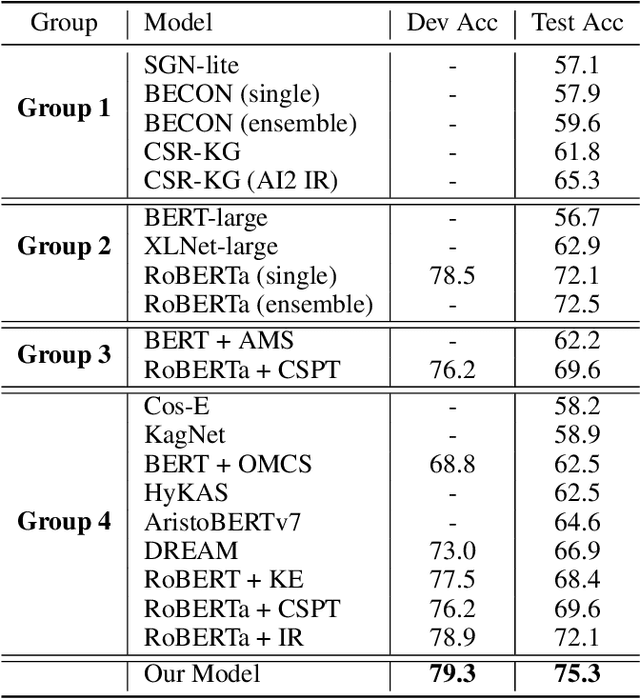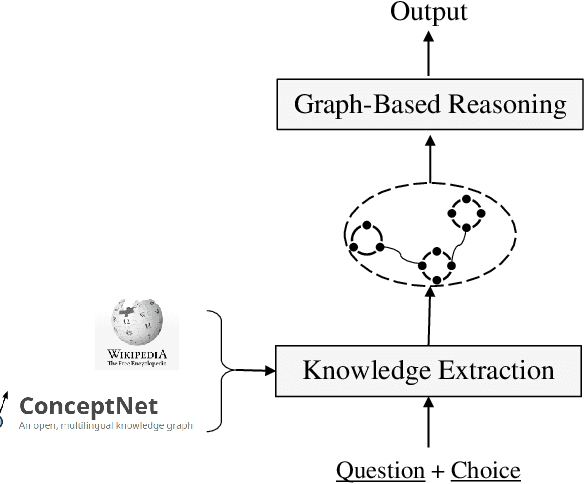Graph-Based Reasoning over Heterogeneous External Knowledge for Commonsense Question Answering
Paper and Code
Sep 09, 2019



Commonsense question answering aims to answer questions which require background knowledge that is not explicitly expressed in the question. The key challenge is how to obtain evidence from external knowledge and make predictions based on the evidence. Recent works either learn to generate evidence from human-annotated evidence which is expensive to collect, or extract evidence from either structured or unstructured knowledge bases which fails to take advantages of both sources. In this work, we propose to automatically extract evidence from heterogeneous knowledge sources, and answer questions based on the extracted evidence. Specifically, we extract evidence from both structured knowledge base (i.e. ConceptNet) and Wikipedia plain texts. We construct graphs for both sources to obtain the relational structures of evidence. Based on these graphs, we propose a graph-based approach consisting of a graph-based contextual word representation learning module and a graph-based inference module. The first module utilizes graph structural information to re-define the distance between words for learning better contextual word representations. The second module adopts graph convolutional network to encode neighbor information into the representations of nodes, and aggregates evidence with graph attention mechanism for predicting the final answer. Experimental results on CommonsenseQA dataset illustrate that our graph-based approach over both knowledge sources brings improvement over strong baselines. Our approach achieves the state-of-the-art accuracy (75.3%) on the CommonsenseQA leaderboard.
 Add to Chrome
Add to Chrome Add to Firefox
Add to Firefox Add to Edge
Add to Edge